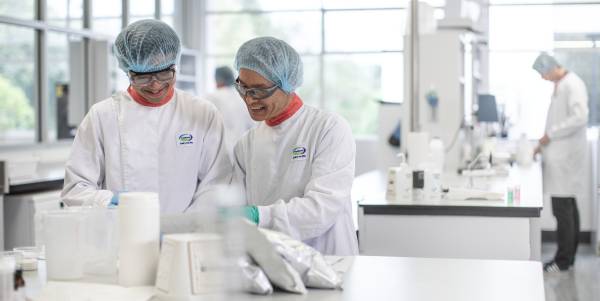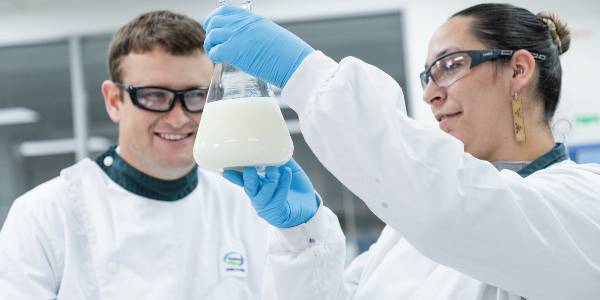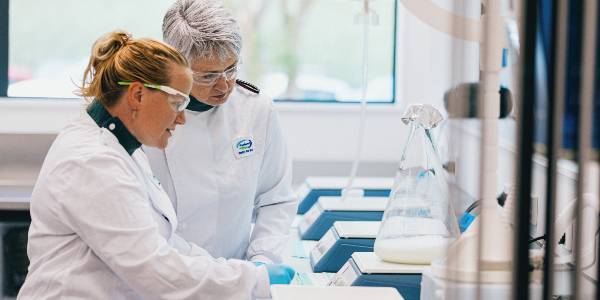Consumers are becoming increasingly health-conscious, driving demand for food products that offer functional benefits beyond basic nutrition.
As a result, one means for food manufacturers and ingredient suppliers to differentiate their products is through scientifically substantiated health claims. However, securing regulatory approval for health claims requires substantial evidence.
Regulatory authorities mandate rigorous scientific review of any claims, which can include putting the ingredient through clinical trials. Additionally, applicants must submit comprehensive documentation demonstrating both the ingredient’s efficacy and its safety for human consumption.
Navigating the regulatory landscape can be complex, as requirements vary between jurisdictions and are subject to change. Companies must ensure that their applications meet all necessary legal and scientific standards to avoid rejection or delays. Given the intricacies of this process, expert guidance is often essential.
Preparing the evidence
Substantiating a health claim can be overwhelming for companies unfamiliar and inexperienced with the process. This is why it helps to have a knowledgeable partner to work alongside at each step of the way. At Fonterra, this process begins with a review of the evidence that exists on the ingredient supporting the particular health claim that a partner wants to substantiate.

This involves understanding the relative strength and completeness of the evidence measured against the regulatory criteria for the target market. This could include carrying out a systematic review of the evidence, if that was not already available for the particular claim.
Adding a layer of complexity is the fact that regulatory requirements differ from market to market. One example of additional information that may be requested could be evidence for a benefit based on the finished consumer product rather than the ingredient itself.

In this example, there could be the need for additional work on the partner’s formulation to support a claim approval, a process which can be carried out collaboratively. This also applies to any supplementary research required to help establish the benefit of the ingredient.
However, pursuing this research can pose its own challenges. Conducting clinical trials is often a part of any regulatory submission, but different countries will have differing requirements on the level of evidence required. For instance, certain countries mandate that preclinical research is completed, while others do not.

Designing a clinical trial that can cover a majority of countries is not an easy task, and this is where an experienced partner that can effectively execute a comprehensive clinical trial design is essential.
All in the design
A well-designed clinical trial is crucial to enable a successful health claim. However, the important part of the process really begins with understanding the way the target consumer thinks about their health needs, and the regulatory environment in which the claim is being made. Once these are established, the information helps to define the research question and in conducting a comprehensive literature review.
The next stage is to understand the latest methodology and regulatory requirements for specific reliable and validated tests to be carried out to assess the health benefits of the ingredient. Following this, the development of a robust protocol, with ethical considerations deeply integrated, and implementing a rigorous methodology, with an appropriate sample and size and statistical analysis, all act to ensure a robust clinical trial design.

Once these steps are completed and the data are generated by the clinical trial, this can be combined with the totality of evidence generated from the literature search to build a comprehensive dossier that is appropriate for submission to the relevant regulatory authorities.
At Fonterra, crafting a science roadmap is an integral element of preparing a dossier for submission. This means being able to answer the key questions that a regulator will pose over evidence of safety and benefits provided by the ingredient, including in the relevant age group, as well as the supporting science on the underlying mechanisms of actions or physiological response.
Science-backed specialty ingredients
For Fonterra, the learning process to best support customers and their consumer brands happens internally. Fonterra’s products span a number of markets with quite different regulatory frameworks, which provides insight and experience into dealing with varying requirements across the globe, and delivered an understanding that a one-size-fits-all approach is not fit for purpose.
One example of work carried out by Fonterra into the health benefits of an ingredient is on the milk fat globule membrane (MFGM). This ingredient is naturally present in milk, and research carried out by the company has shown it can improve wellbeing, increase the ability to cope with stress, and improve mood, among other benefits.¹

With the scale of mental health issues worldwide, estimated to impact one in eight people worldwide, delivering a natural ingredient that could help support improved mental health was a major driver behind extensive research.² MFGM has multiple components, including a phospholipid profile that is similar to that in the brain; the synergistic effects of MFGM components may exert the most significant benefit compared with isolated phospholipid constituents.³
This work also allows Fonterra to promote products based on the potential for MFGM lipids to provide benefits to both infants and adults. This process involved the company facing similar challenges to its partners on establishing these health claims, providing the experience to facilitate and smooth the process to ensure successful application.

Fonterra has a broad range of both core dairy ingredients and specialty ingredients to support customers’ functional nutrition and health product development. All of these ingredients are science-backed and significant investment has been made in clinical studies to support regulatory approvals.
Collaborative development
Support for health claims goes beyond scientific evidence and clinical research. It often includes collaborative development, where ingredient suppliers and manufacturers work together to align on product concepts, regulatory strategies, and application formats. Depending on the size and structure of a company, Fonterra understands the support required may vary — from navigating specific regulatory submissions to designing studies that align with targeted consumer benefits.

Smaller companies may value speed and flexibility in bringing new products to market, while larger organizations may prioritise alignment with broader brand strategies. In either case, a strong understanding of both consumer needs and regulatory frameworks is essential to successfully position a product with a substantiated health benefit.
End-to-end support in this context means aligning evidence generation with the ultimate goal of a regulatory submission – from ingredient review and clinical trial design through to compiling a complete dossier. This also involves addressing practical elements such as ingredient stability, validated testing methods, and intellectual property considerations.
Successfully bringing a health claim to market requires more than just good science – it demands strategic research design, regulatory know-how, and collaboration. With deep expertise in clinical trials, global regulations, and ingredient science, Fonterra helps partners navigate this complex journey with confidence.

As consumer demand for functional benefits grows, having the right partner can make all the difference in turning innovation into approved, market-ready solutions.
References
- Slykerman, R.; et al. Milk fat globule membranes for psychological and physical health: qualitative results from the Employing Milk Phospholipids to Observe Well-being and Emotional Resilience (EMPOWER) randomised trial. J Hum Nutr Diet. 2024 Aug;37(4):1091-1099.
- World Health Organization. Mental disorders.
- Slykerman, R.; et al. Milk Fat Globule Membranes for Mental Health across the Human Lifespan. Foods. 2024 May 24;13(11):1631.



